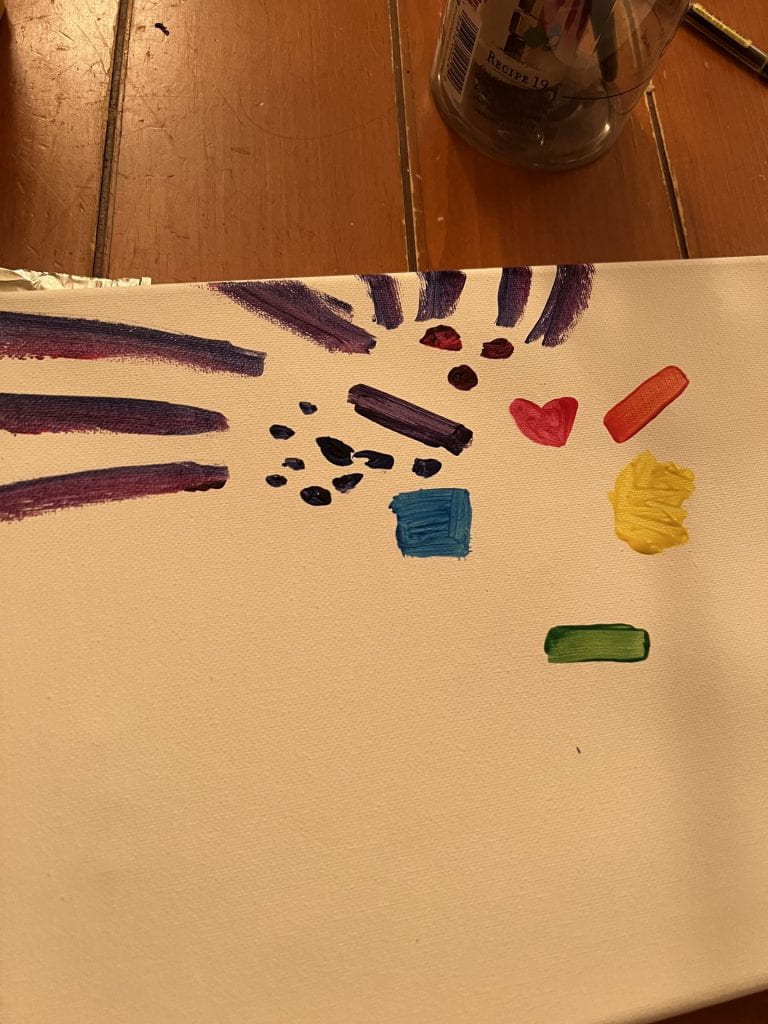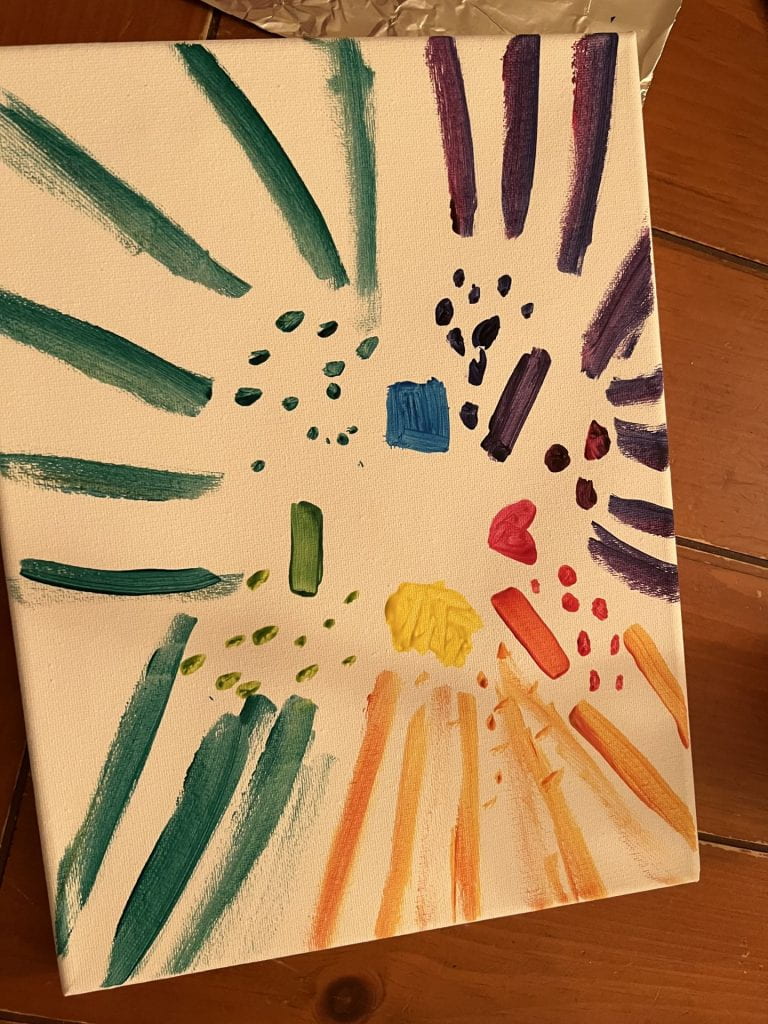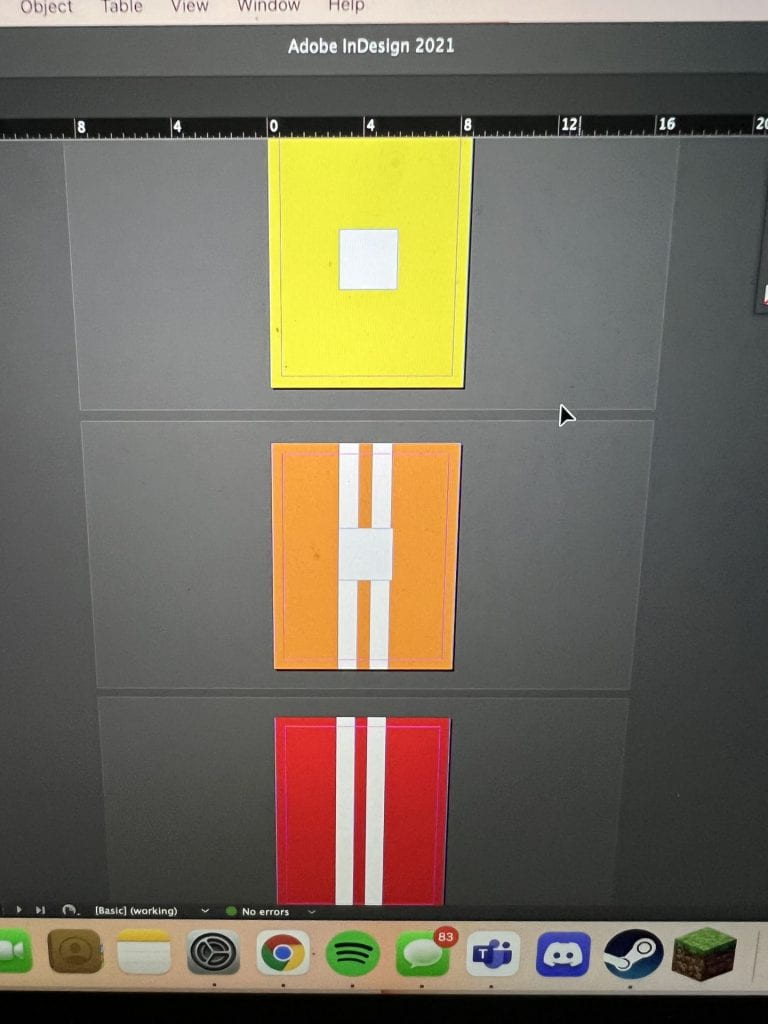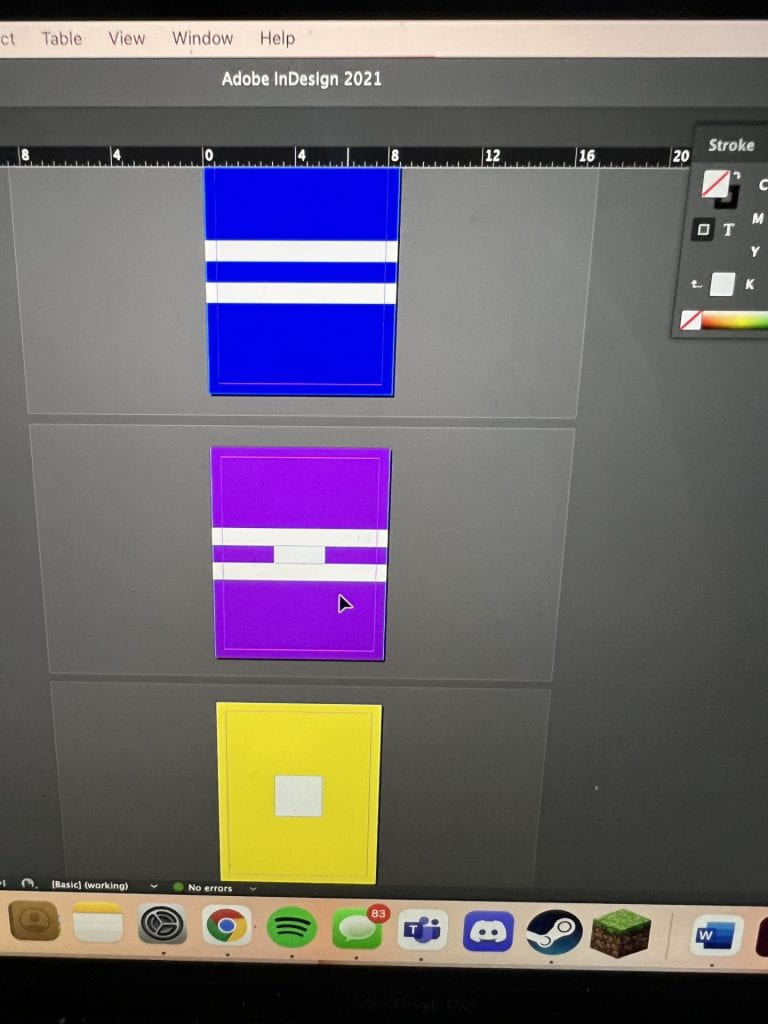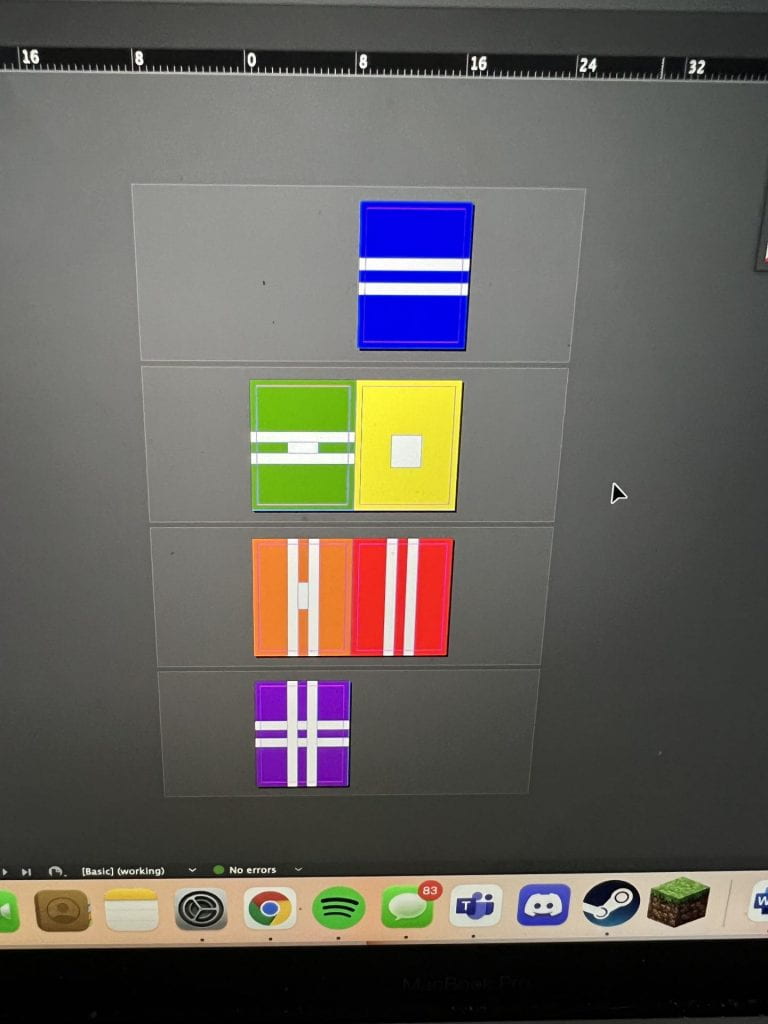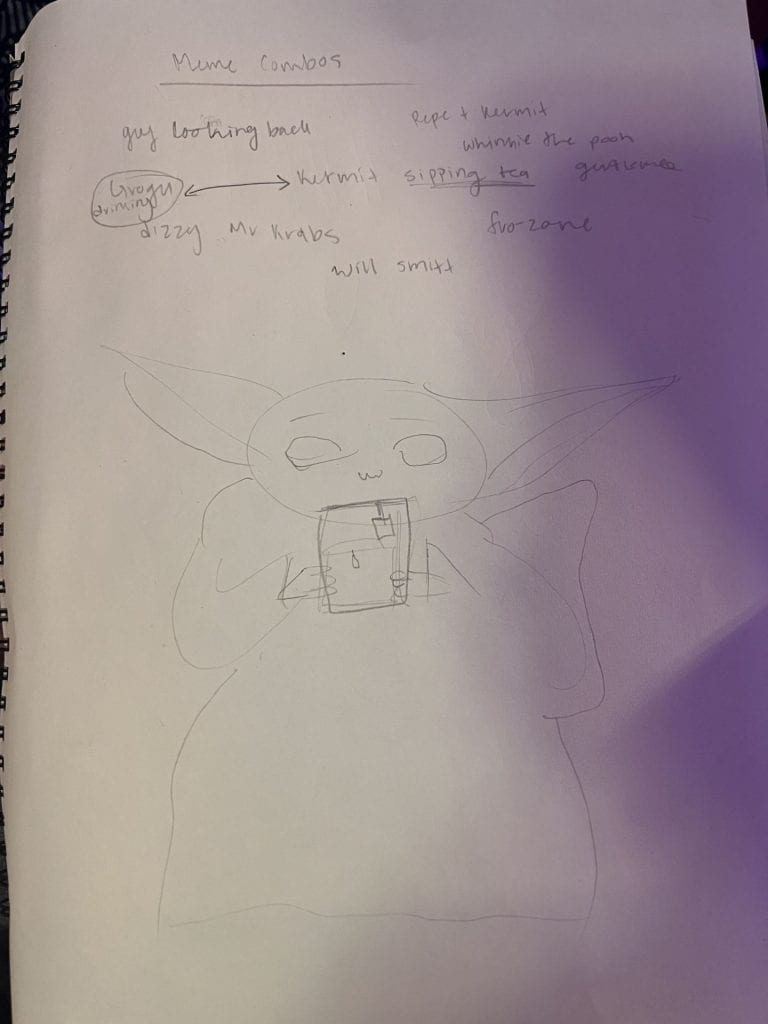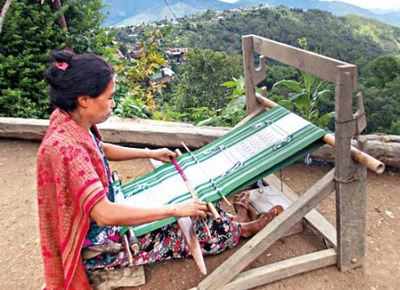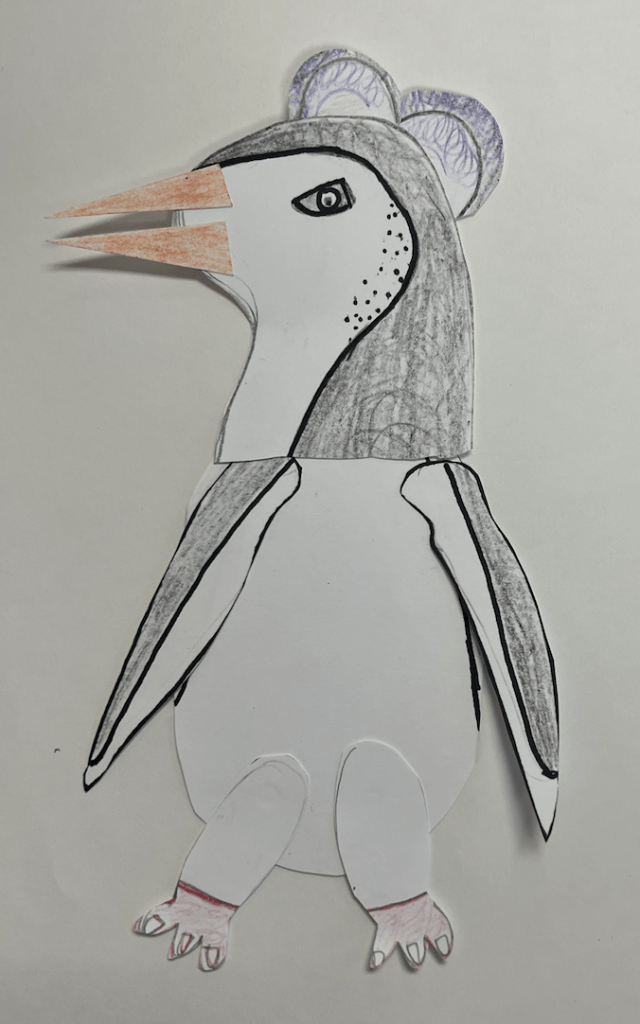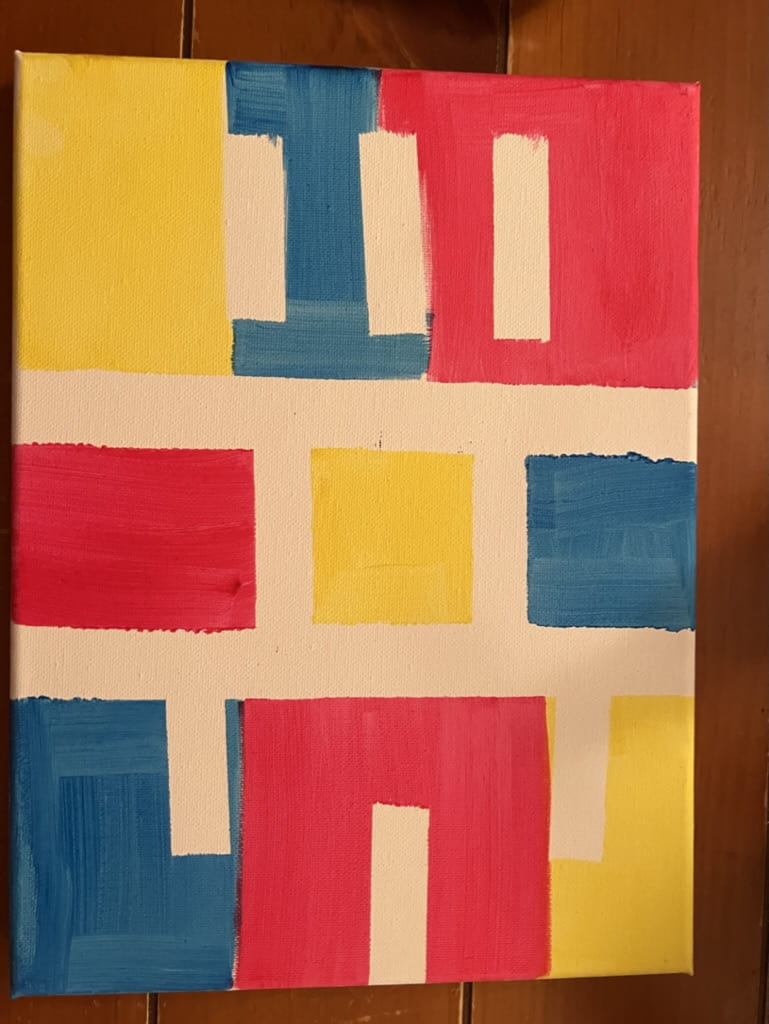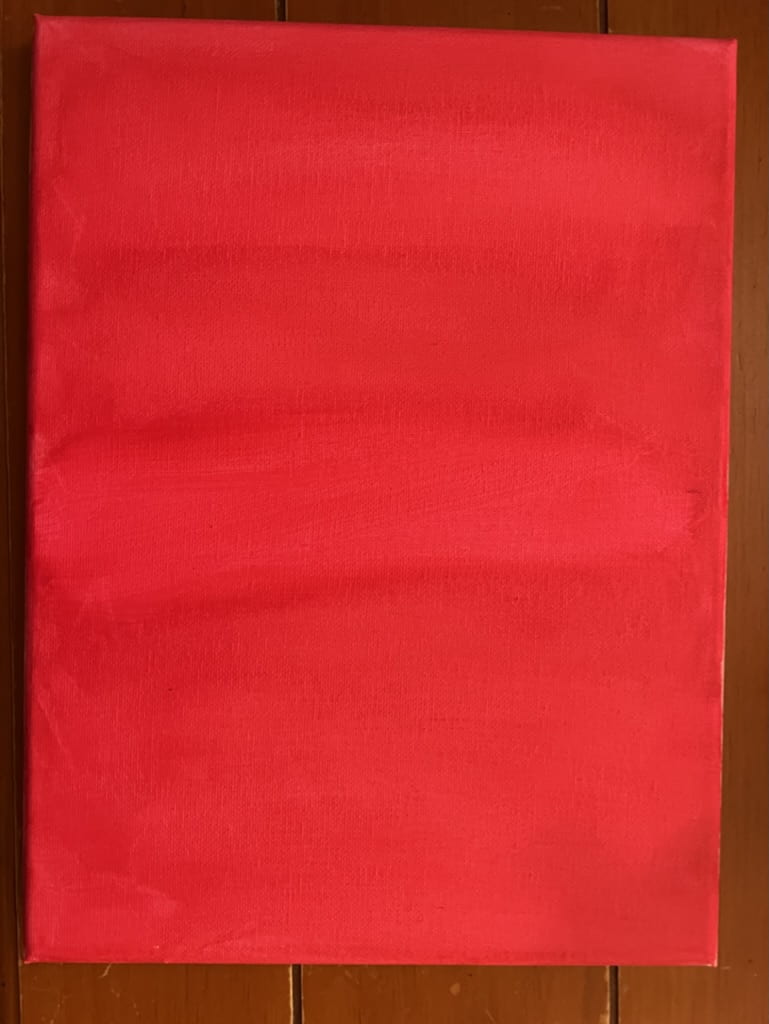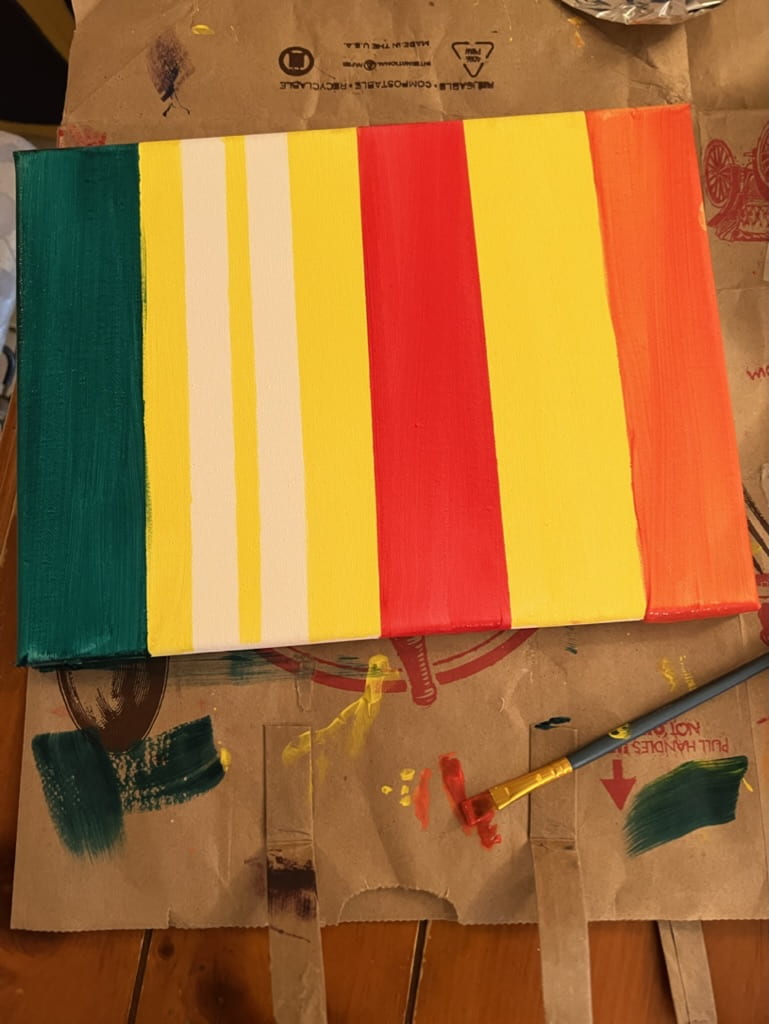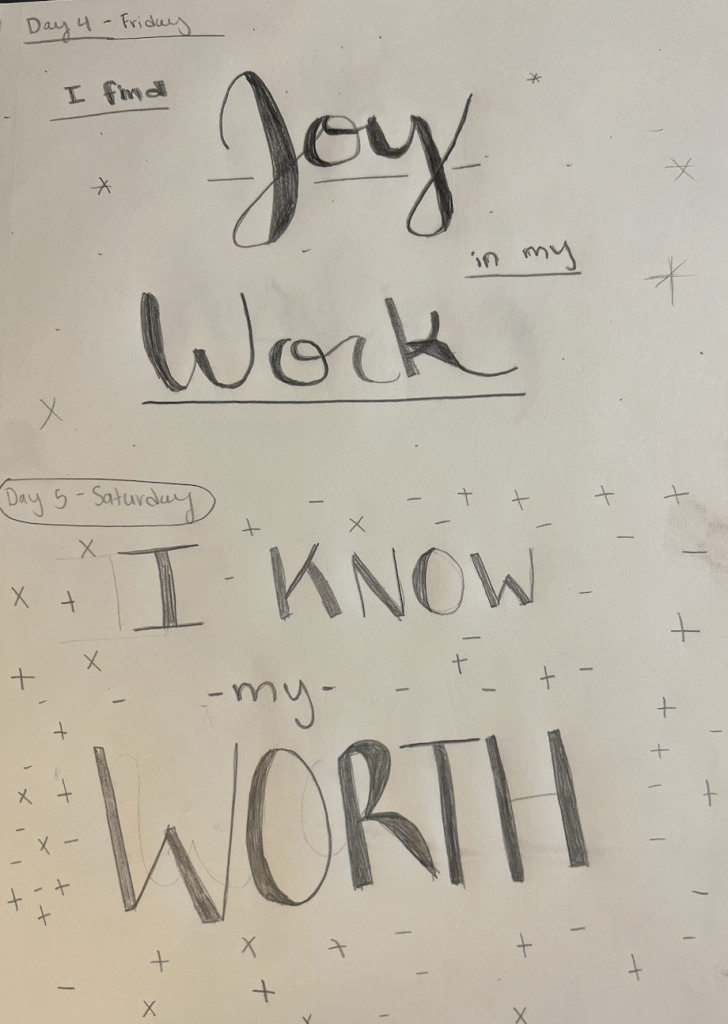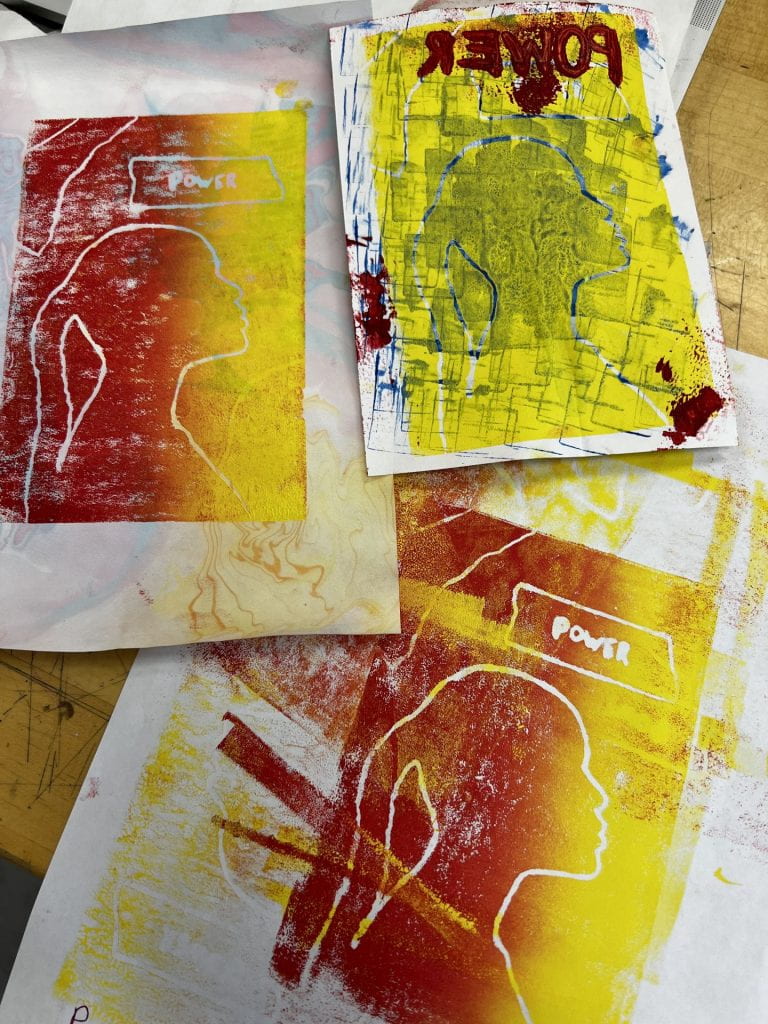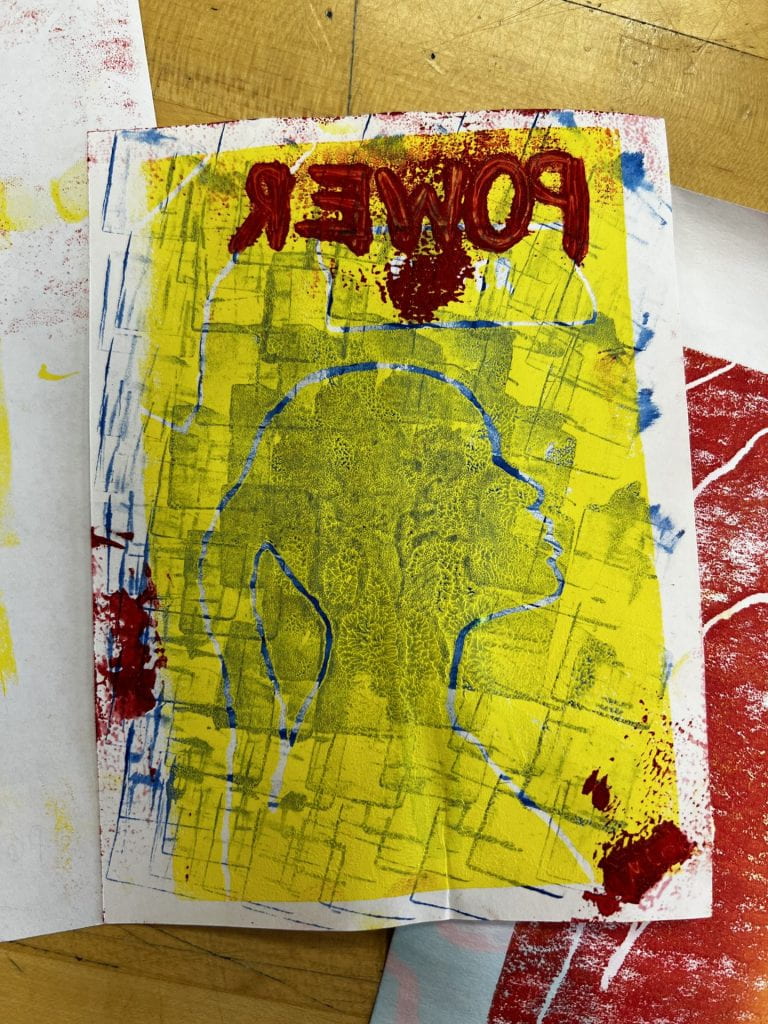Integrated Lesson Plan 1: Math (Alivia)
Name of the lesson: Reflections of You
Grade Level: 6th
Visual art standard: VA.Cr2.1.6a Demonstrate openness in trying new ideas, materials, methods, and approaches in making works of art and design
Other teaching area core standard: Standard 6.NS.6
A. Understand a rational number as a point on the number line. Extend number line diagrams and coordinate axes familiar from previous grades to represent points on the line and in the plane with negative number coordinates.
B. Understand signs of numbers in ordered pairs as indicating locations in quadrants of the coordinate plane; recognize that when two ordered pairs differ only by signs, the locations of the points are related by reflections across one or both axes.
Learning Goal(s): Students will be able to create a symmetrical oil pastel image of their name using the reflection skill of geometry over several axes.
Description: Students will be given a square piece of paper, and they will measure it into six segments that are shaped like slices of a pie. They will write their name in a 3rd form in none section, and then, using natural light and wax paper, will use their math skills of reflection to reflect their written name on each section. The result will be a spiral, symmetrical image. They will then use oil pastels to color the letters.
Teaching to both standards: These two standards overlap because the art standard talks about using new methods and materials, and geometrical reflection will be a new method in both art form and in math. We are directly using the math standard because we will be teaching reflection over axes, which is directly mentioned in the standard. Teaching these two standards together could improve learning in each because students can better understand the concept of reflection and how to do it by actually practicing it. The artistic aspect will also make the math concept more enjoyable and memorable.
Integrated Lesson Plan 2: History (Tayler)
Name of the lesson: Early Civilization Cities
Grade Level: 6th
Visual art standard:
VA:Cr2.3.6a Design or redesign objects, places, or systems that meet the identified needs of diverse users
Other teaching area core standard:
6th grade Social Studies standard 1, objective 4, part a
Identify innovations in manmade structures over time (e.g. irrigation, roads, building materials) and their influence on meeting needs
Learning Goal(s): Students will create their city with irrigation, buildings, and roads, in order to practice drawing, as well as increasing their knowledge of the early civilizations.
Description: Students will be given a large piece of paper where they will draw and design their own city. They will be given instructions to make sure that their city includes building, irrigation canals, and roads. They will be able to decorate however they want, and they will be able to put the pieces wherever they choose. They will then use paint, crayons, colored pencils, etc… to color their city. At the end, they will give their city a name.
Teaching to both standards:
These two standards overlap because the art standard talks about how they will design or redesign objects, places, or systems. With the students creating their own city, they will be able to design it with objects, places, or systems. The history standard will be met because that one talks about how the students need to identify innovations in manmade structures over time and their influence on meeting needs. With designing a city with buildings, irrigation, and roads, the students will be able to see how the early civilization lived and how important those items are to society. Teaching these two standards together allows the students to learn both about history and art in a fun way. By having them create and draw their own city, it allows them to be creative and use problem solving skills. This project may be challenging, but it will allow the students to see how the early civilizations lived in a creative way.
Integrated Lesson Plan 3: Science (Bee)
Name of the lesson: Found Molecule Models
Grade Level: 6th
Visual art standard: VA:Cr3.1.6a – Reflect on whether personal artwork conveys the intended meaning and revise accordingly.
Other teaching area core standard: 6th grade science standard 6.2.1
Develop models to show that molecules are made of different kinds, proportions and quantities of atoms. Emphasize understanding that there are differences between atoms and molecules, and that certain combinations of atoms form specific molecules. Examples of simple molecules could include water (H2O), atmospheric oxygen (O2), and carbon dioxide (CO2). (PS1.A)
Learning Goal(s): Students will use found objects to create models demonstrative of the different kinds, proportions and quantities of atoms and be able to critique each other’s work and adjust their models accordingly.
Description:
Students will take found objects, such as plastic bags, cookies, marbles, play-doh, or whatever material they have at their disposal, and mold them (where applicable) to the shapes or sizes necessary to build a molecular model of a simple molecule of their choice (e.g. Water, oxygen, or carbon dioxide). Students will demonstrate the relative proportions in size and material types of the atoms necessary to build a molecule. Students will then share their model with a neighboring student, gain critiques about necessary scientific adjustments (e.g. are there two hydrogen atoms represented by marbles tapped to a cookie representing oxygen to build a water molecule? Is it clear what material represents which atom?) and overall artistry. They will have the opportunity to revise their models before turning it in.
Teaching to both standards: These two standards overlap because the art standard discusses reflecting on whether personal artwork conveys the intended meaning and to revise accordingly and, in this assignment, students will build scientifically accurate molecular models and reflect on accuracy and artistry by revising after peer critiques. Teaching these two standards together could improve learning in each because students can better understand the concept of molecular composition and reflect if it conveys intended meaning by critiquing with peers. The artistic aspect will also make the science concept more enjoyable and memorable.

